Threshing
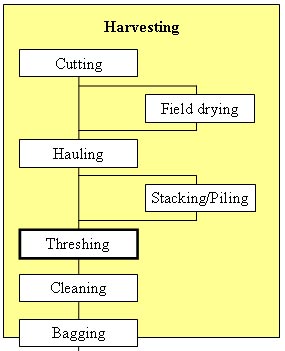 What is a threshing?
What is a threshing?
Threshing is part of harvesting, the process of collecting the mature crop from the field. It includes cutting, hauling, threshing, cleaning and optionally field drying and/or stacking or piling.
Why is proper and timely threshing important?
Any delay between cutting and threshing causes rapid deterioration of the grains, especially during field drying or when the crop is stacked or piled in the field. Improper threshing can also cause high threshing and scattering losses.
Threshing methods
Threshing involves separating the grains from the straw either by impact, friction or combing action.
-
Manual threshing
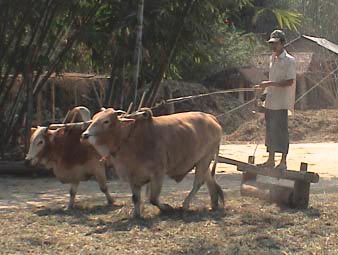 |
Foot threshing or trampling Use of bare feet or animal to thresh the crop, which is spread on the floor. In some regions animals were replaced by tractors. |
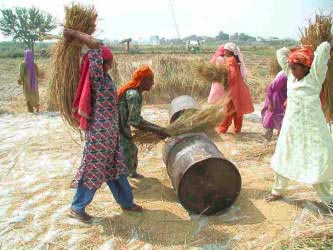 |
Beating against a threshing rack The grains are separated from the straw by impact when beating the crop against a slatted bamboo, wooden platform or any other hard object such as a steel oil drum. |
-
Machine threshing
 |
Because of high labor requirement of manual threshing stationary threshers of different types and sizes are increasingly being used. Depending on farming systems, post-harvest practices and infrastructure, threshers come in different sizes and range from small portable units without cleaner (Iloilo, Philippines) to large, truck mounted units (Thailand). Threshing is either done in the field, near the field or at the nearest road. |
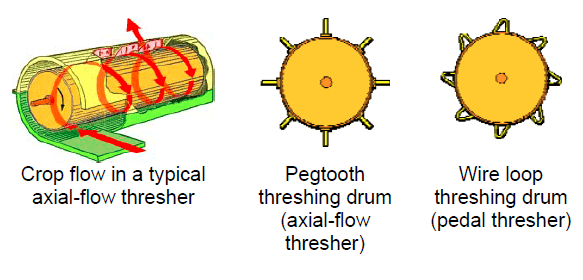 |
|
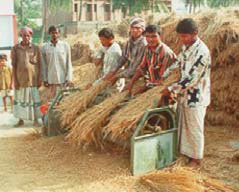 |
Pedal thresher Holding the crop against a threshing drum driven by a foot crank combs the grains from the straw. Because small straw, chaff and foreign matter drops with the grains, cleaning is needed. |







